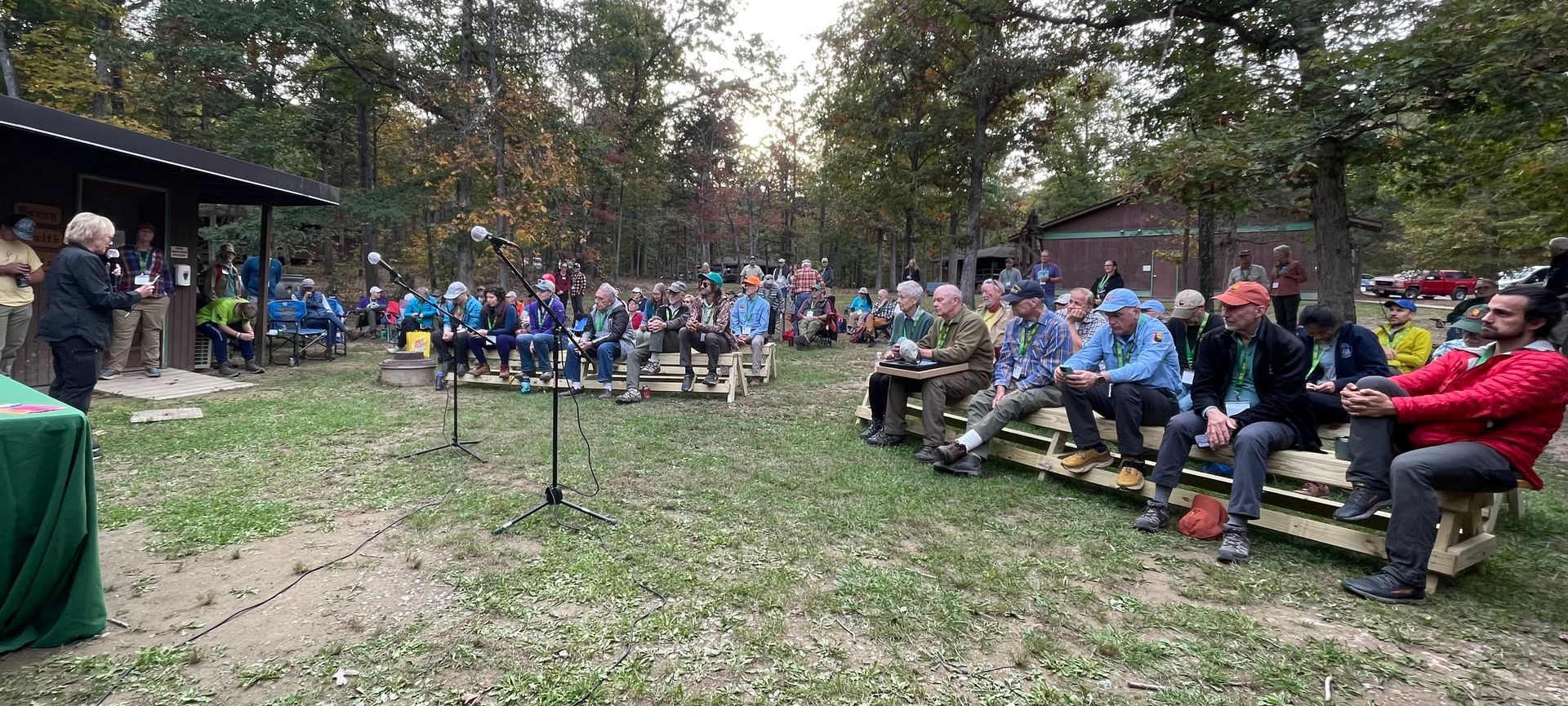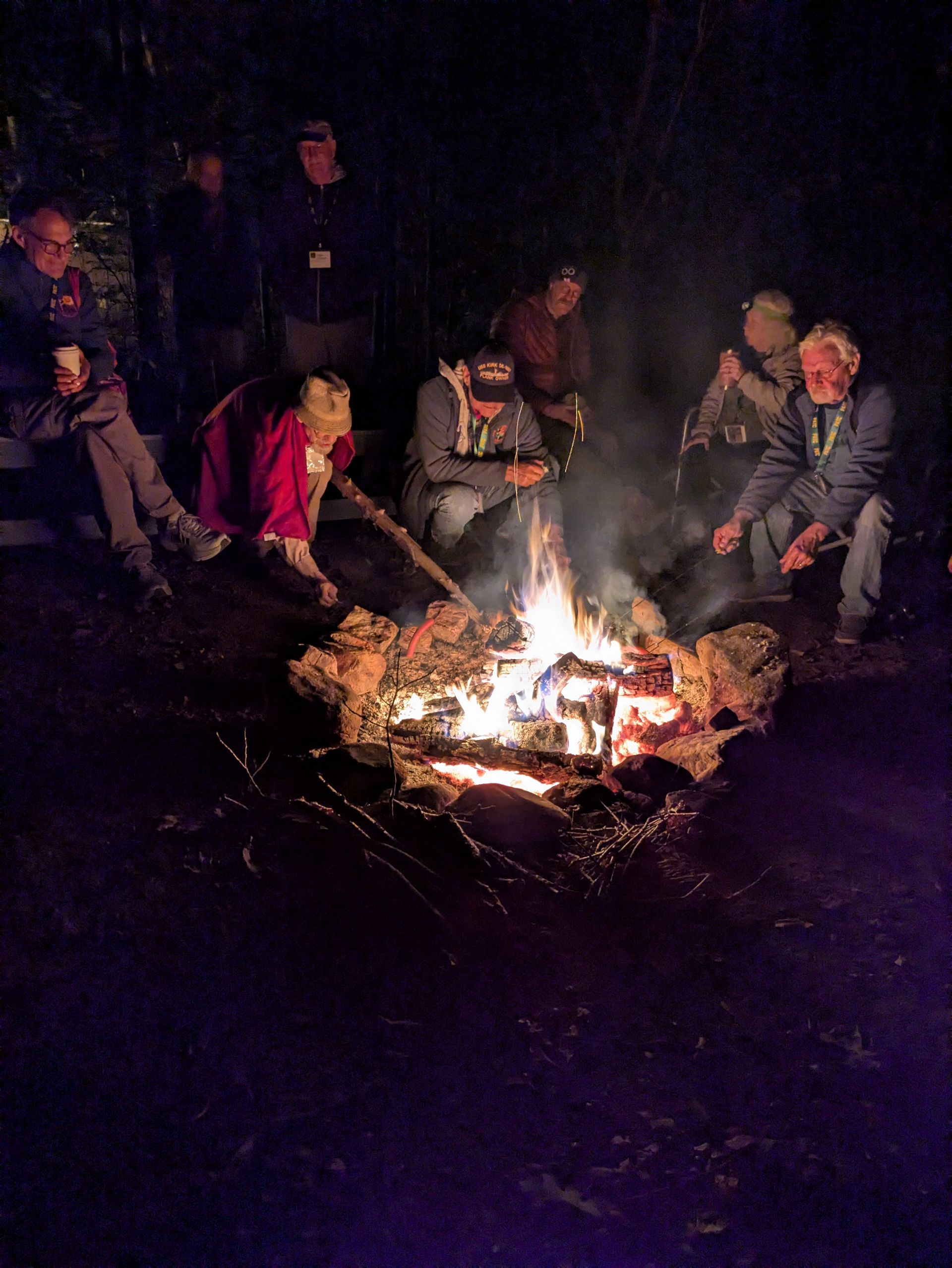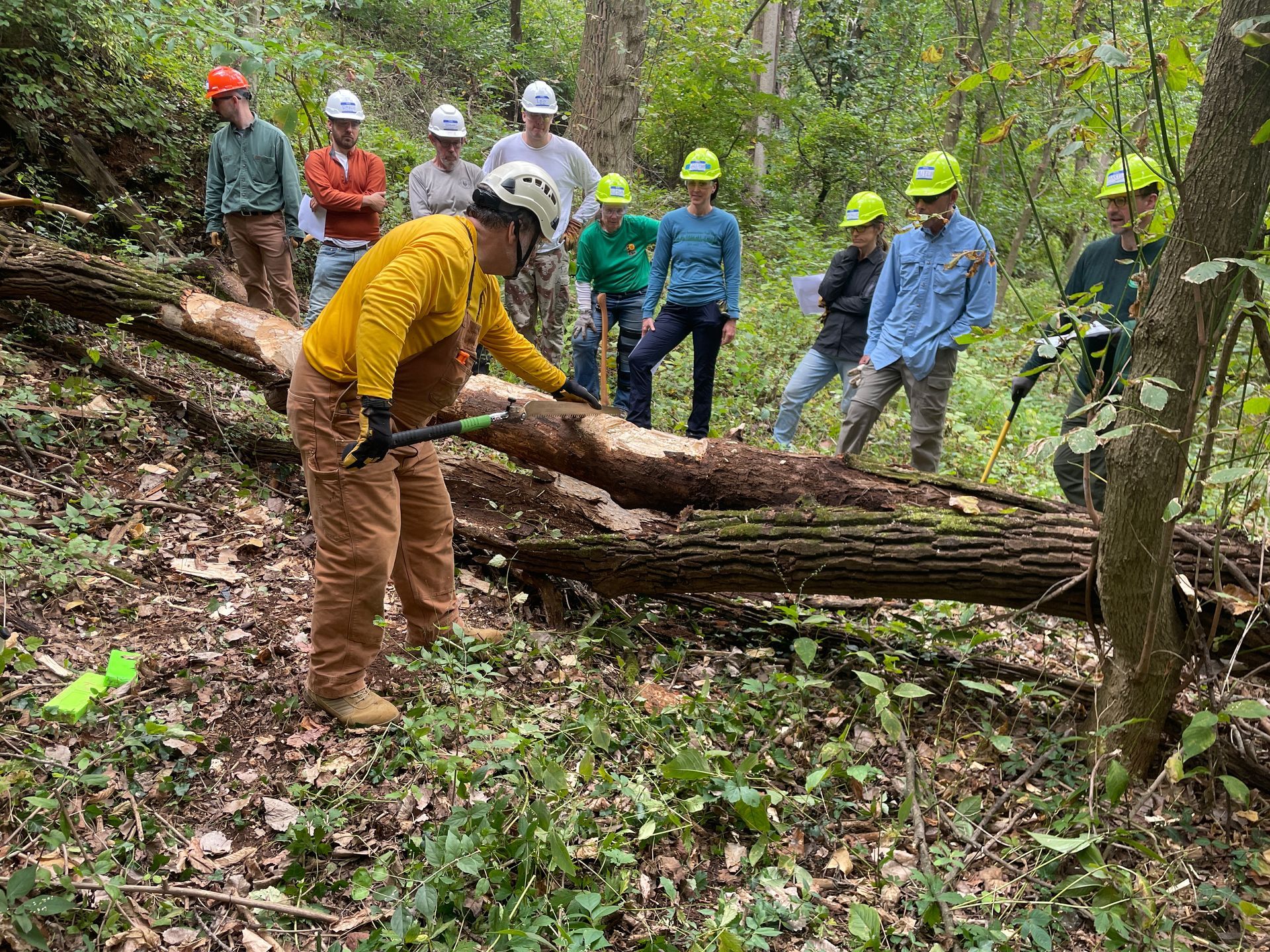Myron Avery, Portrait of a President
While Benton MacKaye, an American philosopher, had a dream of a footpath for hikers on the ridge of the mountains running from Maine to Georgia, Myron Avery was the man who was mainly responsible for the dream come true. He pursued MacKaye's dream with vigor and tenacity and made it a reality. Both MacKaye, the dreamer and idealist, and Avery, the organizer and worker, were essential to the making of the Appalachian Trail.
Benton MacKaye became founder of the Appalachian Mountain Club. At PATC's first meeting on Nov. 22, 1927, Myron H. Avery was elected president. He held the post until the end of 1940 with no real rivals to oppose him.
Avery was a hands-on president the entire time he held office. He was the official leader of a great many hikes and work trips; on countless others he was the behind-the-scenes organizer. He carried on a tremendous amount of correspondence with individuals and organizations.
Council meetings were called when Avery deemed them necessary, often more than once a month, and he made all the arrangements for them. Avery often called committee chairmen, both to check on the progress of their projects and to hustle them along on important work if they seemed slack. He personally tested lots of camping equipment and trail-work tools.
Avery was a one-man public relations department for PATC. He wrote, called, visited and invited on club trips many officials in both the U.S. Forest Service and the National Park Service. He wrote articles on both the PATC and the AT for all five newspapers in the D.C. area in the 1930s.
Avery was out on the Trail about 50 weekends a year. He drove himself, and drove others hard, to fulfill the goal of building a permanent Appalachian Trail. And he wanted to establish PATC, known at that time as simply an outdoor club, as a club with integrity and a valid purpose.
A Tough Taskmaster
Most of the time Avery was considerate, helpful and understanding. With newcomers who were sincerely interested in the club and who were willing to work, he could be a companion and coach. But if he felt he had been crossed or unnecessarily opposed, he could be cold, arbitrary and abrasive. He had little time for those who would not help, who may have been along for a good time only.
If ever proven wrong, Avery would admit it, but this seldom happened as he usually knew exactly what he was doing. Demanding but fair, Avery would not ask others to do what he would not do himself.
Avery often would dictate 20 or more letters in an evening at club headquarters, then ask the secretaries, usually Jean Stephenson or Marion Park, to type them and mail them in a day or so. This was done after everyone had worked a full day. After two or three sessions like this, working 'til midnight, Avery would take the typists out to a sumptuous dinner at a quality restaurant. The meals were paid for out of his own pocket.
Living A Full Life
Myron Avery was completely dedicated to the Appalachian Trail. Aside from his family and work, he had no time for anything else. While he was president of PATC, he also was chairman of the Appalachian Trail Conference from 1931 to 1952. A native of Maine, Avery also helped organize the Maine Appalachian Trail Club and was its supervisor of trails from 1935 to 1949 and its president from 1949 to 1952.
Avery was an expert of maritime and admiralty law and held a responsible post in the U.S. Maritime Commission during these years. He served as a naval officer during World War II as he had in World War I, but was posted to New York City during the years of the second conflict.
Avery was married and the father of two sons. It was said that he averaged five hours sleep a night for many, many years. PATC President (1949-50) Victor Howard, who worked closely with Avery and knew him well, once assessed him as a genius.
It is true that PATC was smaller in those years - 351 members in 1936, for instance - and that there were fewer trips and activities. However, many of them were of the pioneer, groundbreaking variety.
Avery's motto was that failure never should be repeated. A mistake made twice was time wasted and if publicly known would diminish the image of PATC.
Frank Schairer was entrusted with the job of trail clearing and of dealing with landowners. After a difference of opinion, Avery also came to trust Alvin 'Pete" Peterson and gave him carte blanche to build the chain of lean-tos. There were a few others in those early years who took some of the self-imposed load from Avery's shoulders. Still, he insisted on handling much of the whole business of running the club himself. The still-to-be-inspired word "workaholic' would have fitted Avery perfectly.
Clubs Take Opposite Sides
When the federal government began to build Skyline Drive, Benton MacKaye and the Appalachian Mountain Club fought the government to keep the drive off of the crest of the Blue Ridge and lost. But Avery decided to work with the government instead. Consequently, Avery and PATC had influence and were respected for doing a worthwhile job in building the Trail in that area, even though they had no real power. Avery felt that although he might have to compromise in some instances, by working with the government he could be allowed to keep the AT within the boundaries of Shenandoah National Park. His efforts were successful, and he even managed to finagle some help from the Civilian Conservation Corps in building a cabin or two.
The cost was a terrible quarrel with the Appalachian Mountain Club and a personal break with MacKaye, one that never healed.
Avery was so dedicated to Trail activities that when his job took him to New York City in early 1940 he still tried to run PATC in the same hands-on manner as before. He took train and motor trips to go on hikes and work trips and wrote voluminously to committee chairmen and key club members about details that needed taking care of.
This couldn't possibly work for long. Frustrated and feeling he couldn't control events from that distance, Avery resigned on June 11, 1940. The council and many prominent members, some of whom had disagreed with him on several issues and perhaps had felt stunted by his tight control, rose up and begged him to stay on. He agreed to finish his term and retained control of some key club activities.
Avery did not stand for reelection and was succeeded by the club's long-time vice president, Dr. L.F. Schmeckebier, on Jan. 28, 1941.
The Trail Ends
Myron Avery was an inspired, dedicated leader, compulsive about opening the Appalachian Trail and about PATC's part in it. He put his stamp on the club, along with other leaders. PATC still reflects his attitudes and philosophy. Though the word 'elite' is in disrepute these days, this club is elite because of its quality members, high standards and distinguished accomplishments. PATC is respected by all who know about its work.
Scott Johnson, a former PATC president, once told me that this job could take up to 24 hours a day if one let it. No one can meet that standard, but Myron Avery came as close to it as anyone could. It was not, and is not, a wise way to live from a personal standpoint. Avery was dead of a heart attack in 1952 at age 53. Many thought he truly was "burned out" from his complete devotion to his self-appointed task. He paid the price for his work ethic.
Many older members, and other older hikers, think that PATC exists mostly because of Myron Avery. He was a "doer" who put Benton MacKaye's dream into existence. We should be proud he was in our midst in those early years. We are what we are, a responsible and working Trail club respected by the hiking community, because of Myron Haliburton Avery and his dedication, ability and hard work.
Dave Bates










